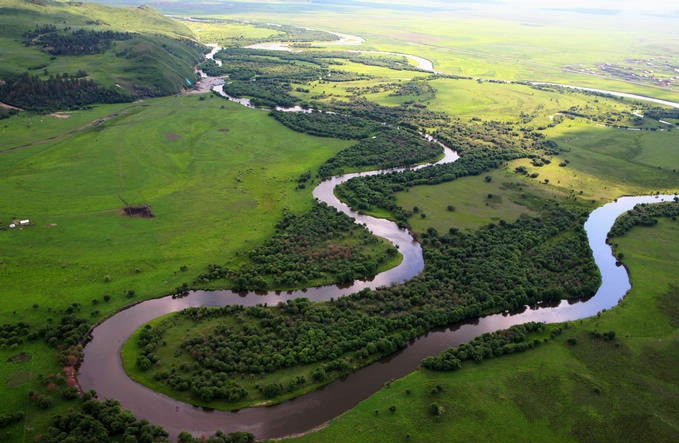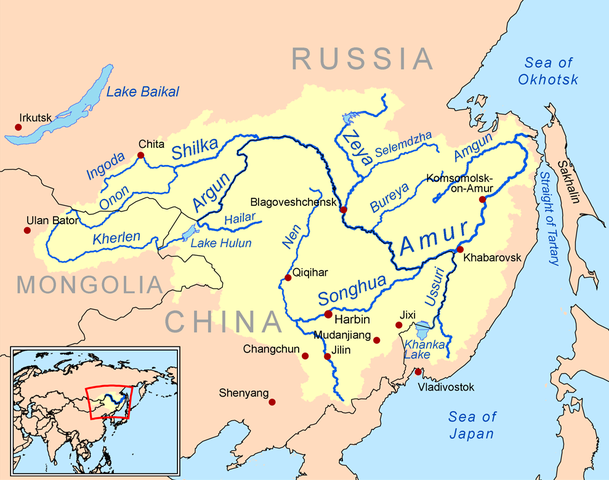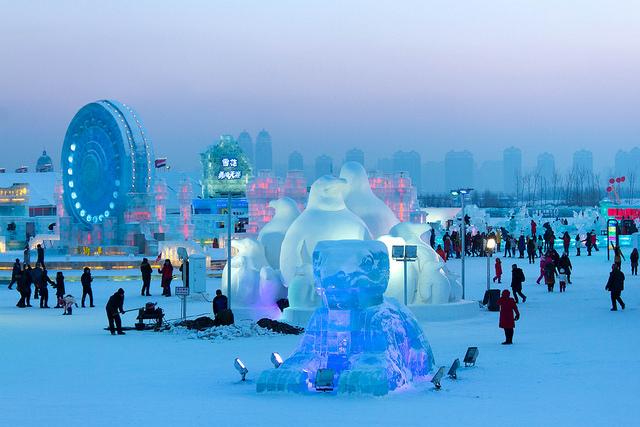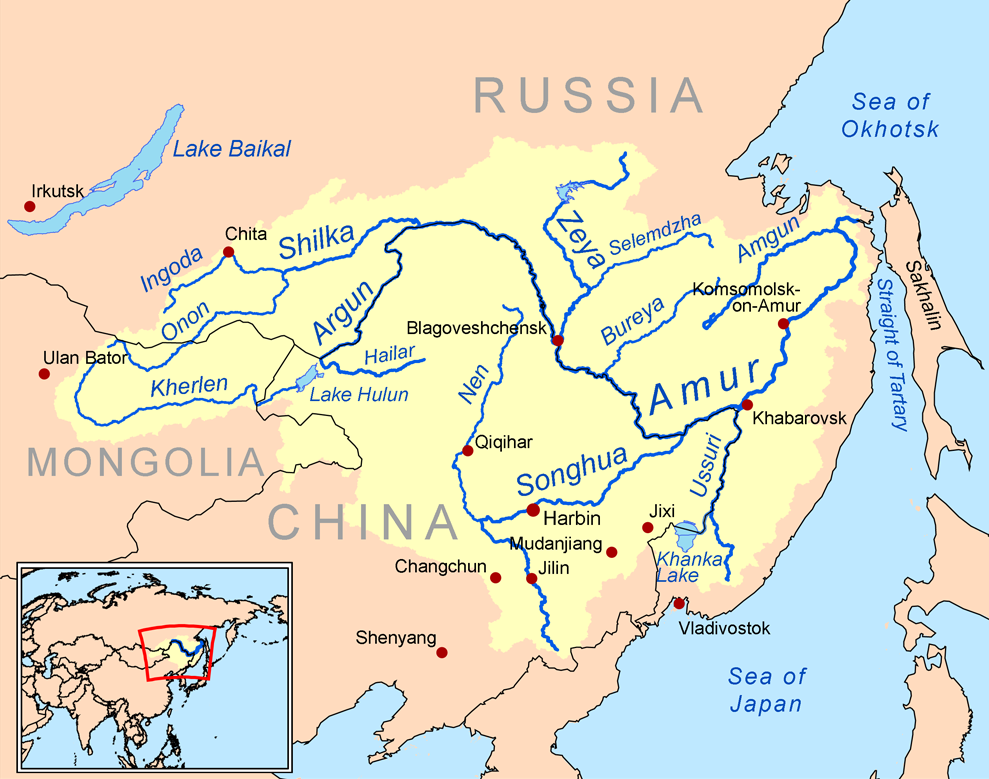
Amur/ Heilongjiang River (Photo: GointoChina.com)
by David Parmer
It would not be surprising to mention the Amur River and draw a blank from most people. Seems like just about everyone has heard of the Yangtze, the Mississippi, the Don, the Volga the Rhine and the Nile and the Amazon. But the Amur River?
That’s strange because it is one of the world’s 10 longest rivers. The Amur (know in China as the Heilongjiang, or Black Dragon River) starts in western Manchuria at the confluence of the Shilka and Ergune Rivers. It flows eastward, from Mongolia and for 3,000 km, forms the border between Russia and China arriving at the Russian city of Khabarovsk before turning north and finally emptying into the Strait of Tartary near the island of Sakhalin. The Amur is approximately 4,000 km long with a drainage area of just under 2 million square km. It is one of the world’s largest remaining free flowing rivers.

Amur River Map (Wikipedia)
Historically the Amur was the backdrop for several successful and unsuccessful Russian expansions to the East. Russian dreams of riches and new land remind one of the movement westward in 19th century America. The Amur River region made headlines in 1969, when the Sino-Soviet conflict broke out along the Ussuri River which flows into the Amur at Khabarovsk. Russian and Chinese forces battled over an island known to the Chinese as Zhenbao Island and to the Russians as Damansky Island. There was small unit fighting supported by artillery and both sides suffered loss of life. In the years following the incident China began secret negotiations with the US culminating in Richard Nixon’s visit to China in 1972. Both the US and China were concerned how to counter Soviet power, and this probably was one of the chief causes for the thaw in relations between the US and China.
 Amur Tiger (Photo: V. Solkin WWF Rusia)
Amur Tiger (Photo: V. Solkin WWF Rusia)
The river’s relative obscurity is probably a good thing for the wildlife of the Amur River. Mass tourism would surely damage what is an amazing ecosystem filled with biodiversity. Wildlife found along the Amur include the Amur Tiger, the Far Eastern Leopard, the Mongolian Gazelle, the Red Crowned Crane and the Amur Sturgeon. The Amur can also boast of an amazing diversity of landscapes. And while mass tourism doe not threaten the river, in its lower reaches there is water pollution, and industrial damage from the Soviet Era. In some areas along the river the Russian side is fairly pristine, while the Chinese side is heavily populated.
So for its own sake, is it better that the Amur River is unknown, or should there be greater awareness of one of Asia’s most beautiful waterways?
WWF-Russia Excellent Presentation on Amur River
http://www.wwf.ru/resources/publ/book/eng/299
 日本語
日本語 English
English 中国語
中国語




 Amur Tiger (Photo: V. Solkin WWF Rusia)
Amur Tiger (Photo: V. Solkin WWF Rusia)